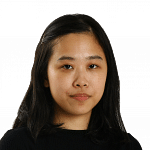SINGAPORE - From the 2024 Secondary 1 cohort, the Ministry of Education (MOE) will post Primary 6 pupils to secondary schools in three posting groups – 1, 2 and 3 – mapped to the Primary School Leaving Examination (PSLE) score ranges for Normal (Technical), Normal (Academic) and Express courses.
The Straits Times answers some questions about the posting groups.
Q: How are posting groups different from the current academic streams? Is it just a renaming of labels?
A: Primary 6 pupils will be sorted into three posting groups with their PSLE scores. This will be mapped from the existing score ranges for the Express, Normal (Academic) and Normal (Technical) streams.
For instance, pupils assigned to Posting Group 3 would have a PSLE score of between four and 20 and be eligible to take most subjects at Secondary 1 at the G3 level, which is the equivalent of the current Express course.
The posting groups may seem like new labels that MOE is using in place of the streams that most Singaporeans are familiar with.
But unlike the existing streams, the posting groups will not shape or define students’ secondary school experiences and their pathways beyond, MOE said.
They will be used only for the purposes of admitting students into secondary schools and to guide the initial subject levels students offer at the start of Secondary 1.
Once in school, students will not be grouped into form classes by their posting groups. They can take up subjects at differing levels depending on their performance in specific subjects, under the MOE’s full subject-based banding approach that will kick in for most secondary schools in 2024.
In addition, schools will arrange students in mixed form classes, which means there will be students from different posting groups in each class. This is a fundamental change from existing form classes where students all come from the same academic stream.
In mixed form classes, students will take common curriculum subjects, such as art, music and physical education, together.
MOE said: “Having three posting groups ensures schools remain accessible and continue to have a good mix of students across diverse learner profiles, and students have opportunities to interact with other students with different interests and backgrounds.”

Q: Why is there a need to have three posting groups?
A: MOE said it had studied alternative posting models as part of its review, but these were not tenable as “they would result in an unbalanced school landscape with a stark hierarchy across schools”.
For example, if there was only one posting group, every school would have a single cut-off point for entry. This would significantly limit the range of schools students can access and narrow the diversity of student profiles schools admit.
“Some schools may end up admitting only students offering subjects at G3, while others may admit only students offering subjects at G1,” said the ministry.
Hence, the posting groups ensure that schools remain accessible to a wide profile of students and enable them to have mixed form classes.
Q: Can students who are in the same school but were admitted through different posting groups take subjects at the same level?
A: Yes, students within the same school who enter through different posting groups can take subjects at the same level as they progress through secondary school.
This is made possible with the implementation of full subject-based banding, where students take subjects at different levels as they discover their strengths and are not constrained by their academic streams.



